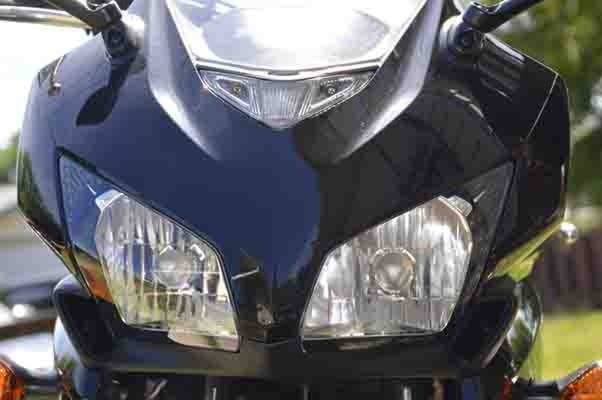The Millet, Wetaskiwin and Leduc areas are popular motorcycle spots. Drive down any street in these communities and you’ll likely see a number of bikes motoring around or parked and awaiting their moment for adventure.
However, a number of fatal or near-fatal motorcycle collisions have occurred recently in the region. Coincidentally, July is the Alberta Traffic Safety Initiative’s month to focus on motorcycle safety.
Wetaskiwin Motorsports staff member Raymond Chen works with motorcycles everyday, and is also a sport bike rider himself. He said rider equipment could be the difference between a minor scrape and a major injury.
“I definitely recommend full protective gear,” said Chen by phone July 15. “Every time I ride I’m always in full gear.”
Chen said armour jacket, approved helmet and riding gloves are a must. Plus, he says he’s also a strong supporter of bike boots. “Boots are important as well,” said Chen, noting he knows a fellow rider who, just once, went riding without his boots and wore sneakers instead. He was involved in a collision and hurt his foot, resulting in missed work and other problems. If he’d worn his boots, Chen noted, he wouldn’t have been hurt that badly.
Chen said motorcycle jackets, pants, gloves and other equipment are engineered with protection in mind. “The main thing is if you go down, even at a slow speed, most typical cloth will tear,” said Chen. While typical street clothing, in a collision, will tear, proper motorcycle equipment is tear-resistant, which means better protection for the rider.
Another major part of riding to keep in mind is slowing the bike down and braking, especially in an emergency. “The best piece of advice is practice,” said Chen. “Getting comfortable with your own bike.”
Chen suggests new riders or riders with new machines pick an out-of-the-way place like a large, quiet parking lot to practice braking, including front, rear and both brakes at the same time.
“Most times you go out riding you don’t have to brake hard very often,” said Chen, who noted if a rider has to stop very quickly, the rider won’t know how his or her bike will react.
As well, Chen said riders should place an emphasis on being visible, as other motorists may not see a rider beside or behind their vehicle.
Anyone who’s spent time on the highway is aware other motorists may not notice a cyclist near their vehicle; or if they do notice, not all motorists give cyclists the respect they deserve. Therefore, it’s very important for a motorcyclist to ride defensively.
The RCMP provided the Pipestone Flyer with some information and advice on motorcycle safety.
The RCMP stated the Alberta Traffic Safety initiative for the month of July focuses on the importance of motorcycle safety. Police will be out in full force to ensure the safe driving behaviours of all motorists, with added focus on motorcyclist.
They noted motorcycles are less visible and less stable than cars, and thus riders need to concentrate on the road and make sure that other users on the road see them. Motorcycles often have high performance capabilities, which can lure riders into performing risky maneuvers that are not only dangerous to themselves but also other users of the road.
In the past motorcycle riders have been arrested and charged for various driving offences including dangerous operation of a motor vehicle, as well as excessive speeding. Some of the speeds that have been recorded are between 80 and 180 km/h over the posted limit. Just this past weekend the Wood Buffalo Integrated Traffic Unit stopped a motorcyclist traveling in excess of 187 km/h in a 110 km/h zone on Highway 63.
Law enforcement would also like to point out that stunting and racing on motorcycles are considered high-risk traffic offences that will be part of the enforcement and education focus for this month and continuing throughout the summer.
These dangerous driving behaviours make motorcycle operators more susceptible to being involved in a collision. A motorcyclist involved in a collision lacks the protection of an enclosed vehicle, so they are more likely to sustain serious injuries. Nearly two thirds of the collisions involving a motorcycle result in serious injury or death.
Safety tips for motorcycle operators: Always carry out a visual inspection of the motorcycle; Protect yourself with the right gear, an approved motorcycle helmet which are required by law in Alberta; Make sure all riders are properly seated and can reach the foot pegs; Stay out of blind spots, make sure other drivers can see you; Always use your turn signal, and take extra care to ensure the way is clear; and be aware of road conditions, as well as construction areas, that may affect the integrity of the road.
